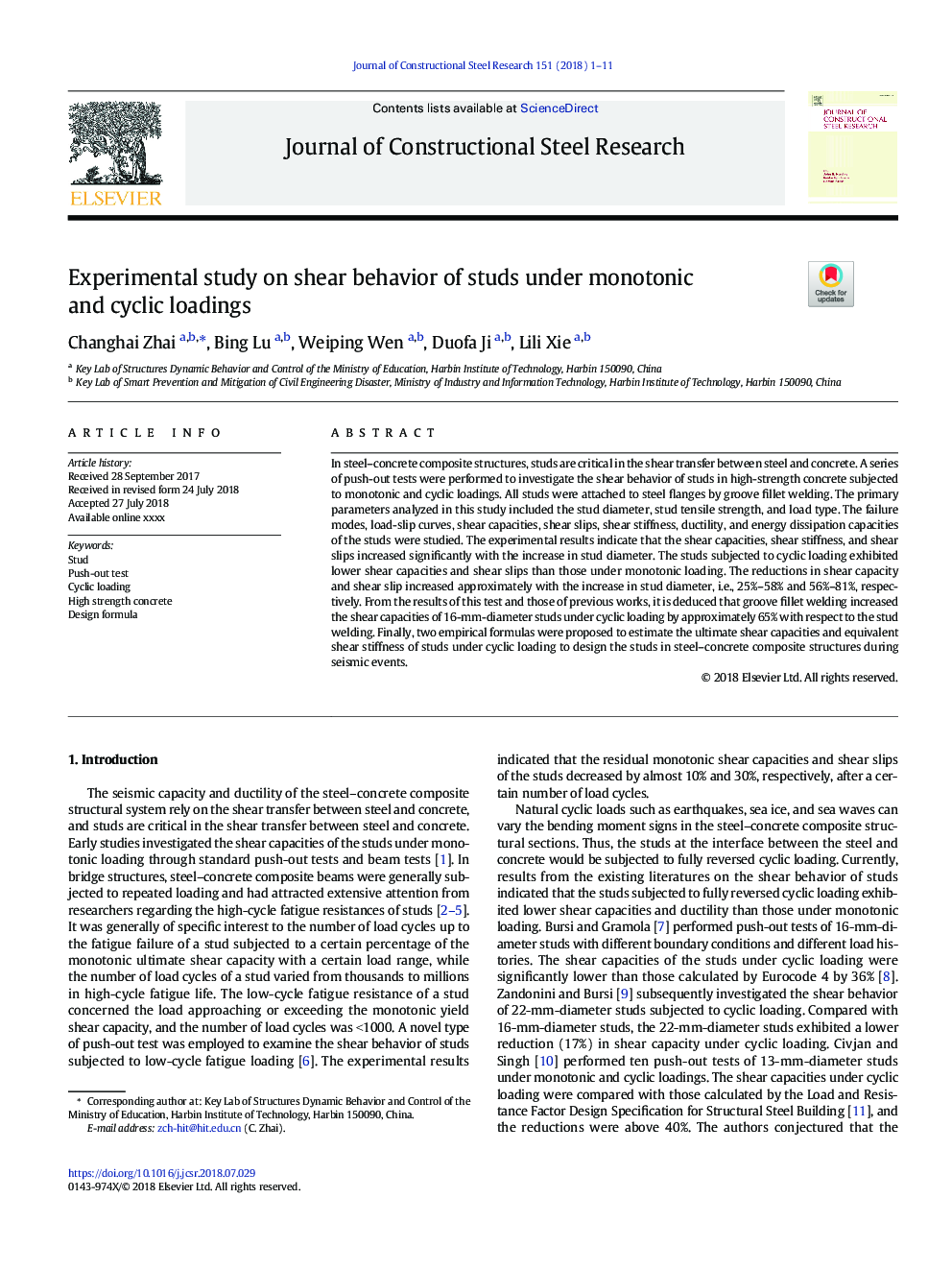| Article ID | Journal | Published Year | Pages | File Type |
|---|---|---|---|---|
| 10225399 | Journal of Constructional Steel Research | 2018 | 11 Pages |
Abstract
In steel-concrete composite structures, studs are critical in the shear transfer between steel and concrete. A series of push-out tests were performed to investigate the shear behavior of studs in high-strength concrete subjected to monotonic and cyclic loadings. All studs were attached to steel flanges by groove fillet welding. The primary parameters analyzed in this study included the stud diameter, stud tensile strength, and load type. The failure modes, load-slip curves, shear capacities, shear slips, shear stiffness, ductility, and energy dissipation capacities of the studs were studied. The experimental results indicate that the shear capacities, shear stiffness, and shear slips increased significantly with the increase in stud diameter. The studs subjected to cyclic loading exhibited lower shear capacities and shear slips than those under monotonic loading. The reductions in shear capacity and shear slip increased approximately with the increase in stud diameter, i.e., 25%-58% and 56%-81%, respectively. From the results of this test and those of previous works, it is deduced that groove fillet welding increased the shear capacities of 16-mm-diameter studs under cyclic loading by approximately 65% with respect to the stud welding. Finally, two empirical formulas were proposed to estimate the ultimate shear capacities and equivalent shear stiffness of studs under cyclic loading to design the studs in steel-concrete composite structures during seismic events.
Related Topics
Physical Sciences and Engineering
Engineering
Civil and Structural Engineering
Authors
Changhai Zhai, Bing Lu, Weiping Wen, Duofa Ji, Lili Xie,
